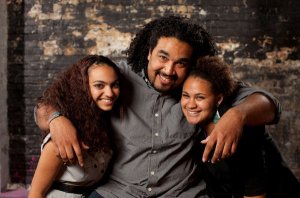It’s hard to believe it’s been five years since CNN’s First “Black in America” debuted.
After taking viewers to the “New Promised Land of Silicon Valley” a year ago and focusing on debt in the African American community in 2010, O’Brien and her producers are back on the East Coast in Philadelphia, Penn and my hometown of Richmond, Va. to turn the spotlight on those Americans who are struggling with their racial identity.
The program “Who is Black in America” that premiered on CNN Sunday evening also features several scholars who educate viewers about many of issues surrounding racial identify, issues that date back to the time of slavery.
Like the previous installments in the overall “In America” series, viewers have to realize the documentary is not just something to watch and then do nothing.
Each “Black in America” program has points that are doorways for discussion.
I’ve been monitoring much of that discussion Sunday evening on Twitter (via #blackinamerica) and Facebook. Some of the commentary from viewers (and non-viewers just reacting to other Twitter posts) can provide an entire program in and of itself.
 Tonight’s premiere of “WHO IS BLACK IN AMERICA?” provided such a doorway. Like a good journalist, O’Brien used the points in the documentary as an opportunity to teach the viewing audience about such concepts as colorism, “The One Drop Rule”, “The Brown Paper Bag Test” and even derogatory terms such as “hi -yellow”
Tonight’s premiere of “WHO IS BLACK IN AMERICA?” provided such a doorway. Like a good journalist, O’Brien used the points in the documentary as an opportunity to teach the viewing audience about such concepts as colorism, “The One Drop Rule”, “The Brown Paper Bag Test” and even derogatory terms such as “hi -yellow”
Most African Americans have heard the above concepts at one point or another in their lifetime.
The issue of interracial marriage was addressed in one of the earlier installments of “Black in America: Black Women and Families” (originally aired in 2008) One of the black women featured, Kimberly Mitchum of metro Atlanta, was married to a man, who is white. The couple admitted how difficult it was raising their mixed race children in a world that saw them as African Americans.
“Who is Black in America” featured lots of mixed-race children, exposed viewers to those who identify as Black, but not necessarily as African Americans.
If you didn’t know much about racial identity, you will after seeing this particular documentary.
The documentary exposed us to Dr. Yaba Blay’s 1 Drop Project and provided us an opportunity to see an excerpt from Blay’s upcoming book.

In the city of Brotherly Love, we’re introduced to spoken word presentations facilitated by Perry “Vision” DiVirgilio.
The over-the-air product is just part of the network’s coverage, one has to look at the web presentation of this topic to see even more people’s stories that answer the question “Who is Black in America?
